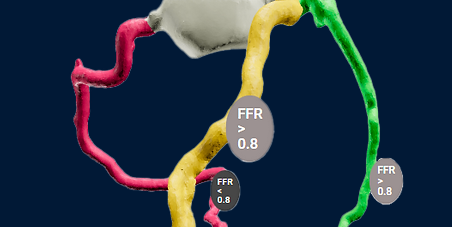
Company: Spimed-AI Product: CorEx
Artificial intelligence-enhanced detection of subclinical coronary artery disease in athletes: diagnostic performance and limitations
The International Journal of Cardiovascular Imaging, 2024
Abstract
Purpose
This study evaluates the diagnostic performance of artificial intelligence (AI)-based coronary computed tomography angiography (CCTA) for detecting coronary artery disease (CAD) and assessing fractional flow reserve (FFR) in asymptomatic male marathon runners.
Material and methods
We prospectively recruited 100 asymptomatic male marathon runners over the age of 45 for CAD screening. CCTA was analyzed using AI models (CorEx and Spimed-AI) on a local server. The models focused on detecting significant CAD (≥ 50% diameter stenosis, CAD-RADS 3, 4, or 5) and distinguishing hemodynamically significant stenosis (FFR ≤ 0.8) from non-significant stenosis (FFR > 0.8). Statistical analysis included sensitivity, specificity, positive predictive value (PPV), negative predictive value (NPV), and accuracy.
Results
The AI model demonstrated high sensitivity, with 91.2% for any CAD and 100% for significant CAD, and high NPV, with 92.7% for any CAD and 100% for significant CAD. The diagnostic accuracy was 73.4% for any CAD and 90.4% for significant CAD. However, the PPV was lower, particularly for significant CAD (25.0%), indicating a higher incidence of false positives.
Conclusion
AI-enhanced CCTA is a valuable non-invasive tool for detecting CAD in asymptomatic, low-risk populations. The AI model exhibited high sensitivity and NPV, particularly for identifying significant stenosis, reinforcing its potential role in screening. However, limitations such as a lower PPV and overestimation of disease indicate that further refinement of AI algorithms is needed to improve specificity. Despite these challenges, AI-based CCTA offers significant promise when integrated with clinical expertise, enhancing diagnostic accuracy and guiding patient management in low-risk groups.
Read full study